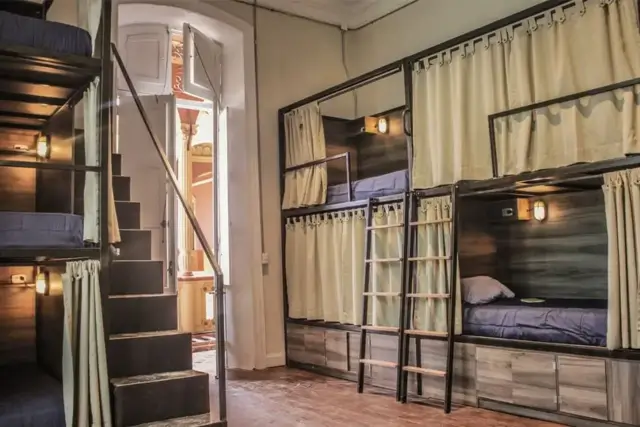Traveling Europe on $50 a day may sound impossible, but with smart planning, flexibility, and local hacks, it’s achievable. From bustling cities like Paris to serene Balkan villages, this guide breaks down how to stretch your euros without sacrificing unforgettable experiences.
1. Budget-Friendly Accommodation ($15–25/night)
Skip hotels and embrace hostels (use platforms like Hostelworld for ratings) or Couchsurfing for free stays. Opt for dorm beds in Eastern Europe (as low as $10/night) or budget chains like Generator Hostels in Western cities. For privacy, book private rooms on Airbnb in cheaper regions like Bulgaria or Poland.
Pro tip: Stay outside city centers—think Prague’s Žižkov district or Berlin’s Neukölln—to save 30–50% on lodging.

2. Cheap Transport: Trains, Buses & Flights ($10–15/day)
• Rail passes: Eurail’s Global Pass offers unlimited travel in 33 countries (from $250 for 4 days).
• Buses: FlixBus and RegioJet connect major cities for under 20(e.g.,BerlintoPraguefor15).
• Budget airlines: Ryanair and Wizz Air sell $30–50 flights between hubs like Rome and Barcelona.
Walk or rent bikes in bike-friendly cities like Amsterdam. Use BlaBlaCar for rideshares to split fuel costs.
3. Eat Like a Local ($10–15/day)
• Self-cater: Buy groceries at Lidl or Aldi—bread, cheese, and fruit make cheap picnics.
• Street food: Grab kebabs in Berlin ($4), or pizza slices in Naples ($3).
• Free breakfasts: Many hostels include toast, eggs, and coffee.
Avoid tourist traps—eat where locals line up. In Spain, order menu del día (3-course lunch for $12).

4. Free & Low-Cost Attractions
Europe is packed with free museums (e.g., London’s British Museum) and walking tours (tip-based). Hike Cinque Terre’s trails, relax in Budapest’s thermal baths ($10), or explore Kraków’s WWII sites.
Use city tourism cards like the Berlin WelcomeCard for discounted entry to 30+ attractions.
5. Extra Money-Saving Hacks
• Travel off-season: Visit Greece in October or France in March for 40% lower prices.
• Refill water bottles: Tap water is safe in most countries.
• Use Revolut or Wise: Avoid foreign transaction fees.
Final Word
Traveling Europe on $50 a day requires trade-offs—fewer fancy dinners, more overnight buses—but rewards you with authentic cultural immersion. Prioritize experiences over luxuries, and watch your budget (and adventure) soar!





